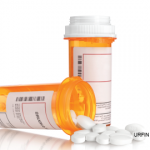Other interventions with more supporting evidence deserve more attention from rheumatologists. Treatments ranging from biofeedback and hypnosis to cognitive behavior therapy have shown benefit—although they are often more expensive. “Nerve blocks and epidurals are poorly covered by insurance, yet I can write Percocet prescriptions all day,” Dr. Molloy says. Non-opioid pharmaceutical approaches receiving more attention recently include serotonin-norepinephrine reuptake inhibitors (SNRIs), such as pregabalin (Lyrica) and gabapentin (Neurontin), a medication used to treat epilepsy and neuropathic pain.
Tools for Managing Opioid Risk
Experts urge rheumatologists to familiarize themselves with the CDC’s March 2016 opioid prescribing guidelines, which recommend trying non-narcotic medications or treatments for pain first, except for active cancer treatment, palliative care or end-of-life care.5 Opioids are for when benefits are expected to outweigh risks, based on a thorough evaluation of pain and its causes, and a thorough discussion with the patient of the risk and benefit—including dangers from polypharmacy and from the concurrent use of alcohol.
Several other interventions recommended by the CDC and endorsed by medical societies are aimed at making opioid prescribing safer—for the patient, physician and society. First is opioid risk screening, which can help to determine which patients have a higher likelihood of abuse or misuse of narcotics. The evaluation incorporates coexisting psychological problems or a history of abuse, including family history. Those identified as higher risks may require greater care and attention from their physician, or opioids may not be a good choice for their pain.
If the rheumatologist intends to order an opioid, Dr. Rapoport recommends executing a signed pain agreement with the patient.6 “We want to take care of our patients, but we’re concerned about the risks of opioid analgesics. I say to my patients: ‘No. 1, I will be the only physician who can prescribe your pain medication, and I need to know which pharmacy you will be using.’ I have all of my patients receiving opioids sign this agreement.”
Dr. Rapoport also tells his patients that urine drug screening tests make for better outcomes for the patient and the doctor. If a drug comes up in the screening that should not be there, or if an opioid that was prescribed is not present, suggesting that it could have been diverted, the doctor can order a more formal test, called chromatography. But the quick-and-dirty four-minute urine cup test is accurate enough for everyday purposes.
Prescription drug monitoring programs (PDMPs), now established in almost every state, are statewide electronic databases that collect data on controlled substances dispensed in the state. By allowing the professional to review all of the patient’s opioid prescriptions from different providers, it helps to identify and deter or prevent drug abuse and diversion and encourage the identification, intervention and treatment of persons who are abusing prescription drugs. It takes some time to contact the PDMP for every patient who is on or about to start an opioid prescription, and the database may not help with patients who are getting additional prescriptions from another adjoining state.
Impact on Rheumatology Practice
What has been the impact of all this national attention to the overdose epidemic on practicing rheumatologists? In data presented at the 2016 ACR/ARHP Annual Meeting in Washington, D.C., in November, Jeffrey Curtis, MD, MS, MPH, from the Arthritis Clinical Intervention Program at the University of Alabama-Birmingham, and colleagues reported on a study of a cohort of 70,000 RA patients between 2006 and 2014. They found that rates of opioid prescribing went up slowly until peaking in 2010 and then started decreasing.7 The researchers also found evidence that physicians may be shifting their patients from stronger opioids to weaker ones, such as Tramadol.


